
- Onsite training
3,000,000+ delegates
15,000+ clients
1,000+ locations
- KnowledgePass
- Log a ticket
+852 2592 5349 Available 24/7


Presentation Skills - Hong Kong

Our Presentation Skills Training Courses are designed to develop interpersonal skills, increase confidence and help in the planning and delivery of successful presentations. These specially designed courses will help you deliver impactful presentations.
REASONS TO CHOOSE
- Learn to engage your audience with our Presentation Skills Training Courses
- Acquire the essential skills to capture and maintain audiences’ attention
- Master effective presentation techniques and strategies
- Attend training sessions conducted by industry experts
- Refine your abilities to communicate effectively with our Presentation Skills Training
Presentation Skills
Presentation skills training.

Online Instructor-led (1 days)
Online Self-paced (8 hours)
- Course syllabus
- Dates & prices
- Who it’s for
- What’s included
Presentation Skills Training Course Outline
Module 1: Introduction to Presentation Skills
- Fundamentals of Presenting
- Become an Effective Speaker
- Your Field of Communication
- Most Common Mistakes
- How to Present with Confidence?
- Planning and Structuring a Presentation
- Transitions
- Organising Presentation Material to Suit Your Audience
Module 2: Using Relevant Presentation Methods
- Presentation Styles
- Preparing for the Occasion
- Preparing for Your Audience
- Using What, Why, and How to Write Your Presentation
Module 3: Bringing Your Presentation to Life
- How to Make a Good Impression from the Start?
- Getting Your Point Across
- Authentic Communication
- Finding Your Own Voice
Module 4: Activity
- Using Visual Aids
- How to Prepare and Present Data?
- How and When to Engage with the Audience?
- Reading Audience Reactions
- Grabbing the Attention of Your Audience
- Asking Questions
- Inspire and Motivate
- Body Language
- Eye Contact
- Using Emotional Intelligence
- Successfully Closing a Presentation
- Receiving Feedback
Module 5: Dealing with Unforeseen Circumstances
- Improvising and Thinking on Your Feet
- Room Layouts
- Beating Last Minute Nerves
- Staying Calm When There are Delays in Starting or Technology Failures
- Dealing with Difficult Audiences
- Dealing with Questions
DELIVERY METHOD
Limited budget?
(63 remaining)
Who should attend this Presentation Skills Training Course?
The Presentation Skills Course is ideally suited for individuals across various professional backgrounds who wish to enhance their ability to deliver impactful and engaging presentations. This Presentation Skills Course can benefit a wide range of professionals, including:
- Executives and Managers
- Sales and Marketing Professionals
- Project Managers
- Public Relations Professionals
- Public Speakers
- Entrepreneurs
Prerequisites of the Presentation Skills Training Course
There are no formal prerequisites for this Presentation Skills Training Course.
Presentation Skills Training Course Overview
The ability to convey ideas, information, and goals effectively is paramount for professional success. A skilled presenter can captivate an audience, persuade stakeholders, and propel careers forward. In today's competitive landscape, mastering Presentation Skills is key to achieving professional growth and influence.
The Presentation Skills Course offered by The Knowledge Academy is designed to equip delegates with the knowledge and skills needed to deliver impactful presentations, enhance confidence, and engage audiences effectively. The course is tailored for professionals, educators, and anyone keen on refining their presentation abilities, empowering them to excel in their respective roles.
This intensive 1-day Presentation Skills Training Course by The Knowledge Academy equips delegates with a robust toolkit for crafting compelling presentations. Delegates explore proven techniques to structure content logically, enhance delivery style, and handle Q&A sessions adeptly. Through engaging Presentation Skills Training Course sessions and real-time feedback, delegates gain invaluable insights.
Course Objectives
- To master the art of structuring presentations for maximum impact
- To develop effective verbal and non-verbal communication skills
- To create visually engaging and informative slides
- To learn techniques for managing nervousness and stage fright
- To gain strategies for handling questions and discussions
- To enhance audience engagement and participation
- To understand the psychology of persuasion in presentations
- To practice and receive constructive feedback on presentation delivery
After completing the Presentation Skills Course, delegates will possess a powerful skill set to excel in their professional roles. They will have the confidence to deliver compelling presentations that captivate and persuade audiences. Whether pitching ideas, leading meetings, or delivering training sessions, delegates will stand out as effective communicators.
What’s included in this Presentation Skills Training Course?
- World-Class Training Sessions from Experienced Instructors
- Presentation Skills Certificate
- Digital Delegate Pack
Business Writing Course
Business writing course outline.
Module 1: Introduction to Effective Communication
- Definitions of Effective Communication
- Verbal and Non-Verbal Communication
- Aids and Barriers of Effective Communication
- Why is Effective Communication Important?
Module 2: Effective Communication Writing Essentials
- Who is Your Audience?
- Engaging Your Audience
- 7 C’s of Effective Communication
- Dealing with Common Errors
- Apostrophes
- Why are Apostrophes Important?
- Quotation Marks, Commas, Semicolons, and Colons
- Standard Salutations/Greetings and Complimentary Closes
- Planning, Reviewing, and Sending Written Information
Module 3: Report Writing
- What is a Report?
- Effective Report Writing
- Structure of a Report
Module 4: Key Skills for Effective Communication
- Reading Skills
- Applying Reading Skills
- Effective Reading Skills
- Effective Listening Skills
- Positivity and Assertiveness
- What Does It Mean to Be Assertive?
- Persuasive Communication and Persuasion
- What is Influencing?
Module 5: Making Your Pitch
- What are You Presenting?
- Key Benefits of Spoken Communication
- Drawbacks of Spoken Communication
- Elements of a Professional Presentation
- Common Public Speaking Fears
- Common Myths
- Tips for Public Speaking
- Visual Aids
- Presentation Essentials
- Tips for Timings (and Nerves)
Module 6: 7 C’s of Effective Communication
- Completeness
- Conciseness
- Consideration
- Concreteness
- Correctness
Who should attend this Business Writing Course?
The Business Writing Training Course is designed for a wide range of professionals who aim to enhance their written communication abilities within a corporate context. This Presentation Skills Course can be beneficial to a wide range of professionals, including:
- Corporate Professionals
- Managers and Supervisors
- Sales and Marketing Teams
- Customer Service Representatives
- Technical Professionals
- Entrepreneurs and Small Business Owners
Prerequisites of the Business Writing Skills Course
There are no formal prerequisites for this Business Writing Training Course.
Business Writing Course Overview
The Business Writing Skills Course, presented by The Knowledge Academy, addresses the critical need for clear and persuasive writing in professional settings. In an era where information overload is the standard, mastering Business Writing is essential for conveying ideas, building relationships, and achieving professional success.
From marketing executives crafting persuasive content to managers communicating strategic plans, the ability to convey ideas clearly and concisely is a crucial skill. Business professionals, entrepreneurs, marketing and sales teams, and anyone seeking to enhance their written communication skills should aim to master this subject.
The 1-day course by The Knowledge Academy equips delegates with practical skills to transform their writing. Through interactive sessions and real-world examples, delegates will learn to structure compelling messages, eliminate jargon, and adapt their tone for diverse audiences. This Presentation Skills Course empowers delegates to write with confidence, impact, and precision, ultimately enhancing their ability to influence and persuade in the business context.
- To develop clear and concise Business Writing Skills
- To craft persuasive and engaging messages
- To adapt to the writing styles required for different business contexts
- To eliminate common grammar and punctuation errors
- To create effective reports, emails, and proposals
- To enhance professional credibility through writing
- To implement practical strategies for time-efficient writing
After completing these Presentation Skills Training Courses, delegates will emerge with a heightened proficiency in written communication. Armed with useful techniques and newfound confidence, they will be well-prepared to tackle various writing challenges.
What’s included in this Business Writing Course?
- Business Writing Certificate
Data Analysis Skills
Data analysis skills course outline.
Module 1: Introduction
- Data Analysis and Synthesis
- What are Statistics?
- Statistics Within the Business
Module 2: Defining the Problem or Opportunity
- Defining the Problem – What Tools to Use?
- PDCA (Plan, Do, Check, Act)
Module 3: Evidence/Fact Driven Analysis
- Step Data Collection Process
- List of Criteria for Good Measure
- Measurement System Resolution
- Data and Visual Management (Visual Factory)
- Cognitive Bias
- Introducing Inductive and Deductive Approaches to Validate Data
- Developing and Testing Hypotheses
Module 4: Introduction to Hypotheses Testing
- Hypotheses Testing
- Null and Alternate Hypothesis
- How can the P-Value help?
- Using Control Groups as a Baseline
- What is Skewed Data?
- Using Sigma to Identify If the Process is in Control
- Control Charts
- JQT Zones and Assignable Cause Tests
- Normal Distribution and Normal (Bell) Curve
- Standard Deviation (σ)
- Normal Distributed Bell-Shaped Curve
- Data Classification
- Dependent Vs Independent
- Classes of Data Variable
- Discrete Variables
- Binary and Variables
- Why is the Class of Data Important?
- Hints and Tips
- Steps to Work with Survey Data
- Steps to Follow when Working with Survey Data
- Working with Decision Variables
- Internal and External Constraint
- Constraints and Process Capability
- CP Process Capability
- Reliability of Predictions
- Identifying Variables that You Can Control
- Optimise Your Data Worksheet
Module 5: Calculating Probability Using a Statistical Package
- Probability Defined
- Variation Terminology
- Distribution Curves
- Sensitivity Analysis
Module 6: Scatter Diagrams and Regression
- Scatter Diagrams
- Forecasting
- A Scatter Diagram is the First Step Towards Regression Analysis
- Correlation Coefficient
Module 7: Identifying the Root Cause
- Cause and Effect Diagram to Investigate the Root Causes of Repeat Calls
- Reverse Fishbone Diagram
- Decision and Probability Trees
- Earned Value Management
- Monte Carlo Simulation
- Earned Value Analysis
- Perform Sensitivity Analysis Through Random Parameter Variation
- Using Graphics to Present Data
Module 8: Charts
- Pareto Charts
- Tornado Charts
Who should attend this Data Analysis Skills Course?
The Data Analysis Skills Training Course is ideally suited for individuals who are looking to enhance their proficiency in handling and interpreting data to make informed decisions and gain valuable insights. This Presentation Skills Course can be beneficial to a wide range of professionals, including:
- Data Analysts
- Business Analysts
- Data Scientists
- Market Researchers
- Financial Analysts
- Marketing Analysts
- Operations Analysts
Prerequisites of the Data Analysis Skills Course
There are no formal prerequisites for this Data Analysis Skills Training Course.
Data Analysis Skills Course Overview
The Data Analysis Skills Training Course offered by The Knowledge Academy is designed to equip delegates with essential tools and techniques to harness the power of data effectively. Whether you are in business, healthcare, finance, or any industry, understanding Data Analysis is pivotal for enhancing productivity, improving processes, and gaining a competitive edge.
Proficiency in this Presentation Skills Training Course is a vital skill set sought after by professionals across various domains. Business Analysts, Data Scientists, Marketers, and even Managers benefit from understanding Data Analysis. In an era where data is abundant, the ability to uncover actionable insights from datasets empowers professionals to make informed decisions, optimise strategies, and drive organisational success.
The Knowledge Academy’s intensive 1-day Presentation Skills Course offers delegates a fast-track journey to becoming proficient in Data Analysis. Delegates will learn to gather, clean, and visualise data, perform statistical analyses, and interpret results effectively.
- To understand the fundamentals of data analysis and its applications
- To learn about data collection and pre-processing techniques
- To gain expertise in data visualisation for effective communication
- To explore statistical analysis methods for data-driven decision-making
- To apply Data Analysis techniques to real-world scenarios
- To interpret and communicate results effectively
- To build a foundation for advanced Data Analysis and Machine Learning
After completing this Presentation Skills Training Course, delegates will have a solid foundation in Data Analysis techniques, enabling them to make data-driven decisions confidently. They will be better equipped to extract valuable insights from datasets, enhance their problem-solving abilities, and contribute significantly to their organisations' success.
What’s included in this Data Analysis Skills Course?
- Data Analysis Skills Certificate
Blended Learning Essentials
Blended learning essentials course outline.
Module 1: Introduction to Blended Learning
- Definition of Blended Learning
- Benefits and Advantages of Blended Learning
- Key Terminology and Models
- Blended Learning Continuum
Module 2: Blended Learning Pedagogy
- Principles of Effective Blended Learning Design
- Aligning Learning Objectives with Blended Learning
- Cognitive Theories and Blended Learning
- Constructivist and Connectivist Approaches
- Assessing Learning Styles in a Blended Environment
Module 3: Online Learning Tools and Technologies
- Learning Management Systems (LMS)
- Synchronous Vs Asynchronous Learning
- Utilising Video Conferencing and Webinar Platforms
- Integrating Learning Apps and Digital Resources
- Gamification and Interactive Content
Module 4: Designing Blended Learning Courses
- Needs Assessment for Blended Learning
- Creating a Blended Learning Blueprint
- Sequencing Online and In-Person Components
- Designing Engaging Learning Activities
- Incorporating Formative and Summative Assessment
Module 5: Blended Learning Content Development
- Developing Multimedia Content
- Adapting Existing Materials for Online Use
- Copyright and Fair Use in Digital Learning
- Accessibility and Inclusivity Considerations
- Quality Assurance and Review Processes
Module 6: Facilitating Blended Learning Experiences
- Instructor Roles in Blended Learning
- Online Facilitation Best Practices
- Managing Online Discussions and Collaboration
- Providing Timely Feedback
- Addressing Technical Issues and Support
Module 7: Blended Learning Assessment and Evaluation
- Assessment Strategies for Blended Courses
- Measuring Learning Outcomes in Online and In-Person Settings
- Analysing Data for Continuous Improvement
- Addressing Cheating and Academic Integrity
- Feedback and Grading
Module 8: Blended Learning Implementation and Scaling
- Planning for Blended Learning Success
- Scaling Blended Learning Programmes
- Overcoming Common Implementation Challenges
- Professional Development for Educators
Who should attend this Blended Learning Essentials Course?
A Blended Learning Essentials Training Course focuses on equipping individuals with the skills and knowledge required to effectively lead, facilitate, and manage innovation within organisations. This Presentation Skills Training Course can be beneficial for a wide range of professionals, including:
- Instructional Designers
- E-learning Developers
- Distance Learning Coordinators
- Technology Integration Specialists
- Educational Administrators
- Corporate Trainers
- Human Resource Professionals
Prerequisites of the Blended Learning Essentials Training Course
There are no formal prerequisites for this Blended Learning Essentials Training Course.
Blended Learning Essentials Course Overview
Blended Learning is a widely accepted method of education that combines traditional classroom methods with online digital media. It makes learning more accessible and engaging by incorporating appropriate images, audio, and video, which can add variety and impact. To ensure a positive learning experience for their students, they hire professionals with a good understanding of Blended Learning.
Proficiency in this Presentation Skills Training - Blended Learning - is crucial because it optimises the effectiveness of education and training courses, ensuring engagement and knowledge retention. Educators seeking to enhance their teaching methodologies, corporate trainers aiming to boost employee development, and learning designers striving for innovative solutions should all aim to master this subject. The course provides the expertise needed to excel in their respective fields.
This intensive 1-day Presentation Skills Training offered by The Knowledge Academy empowers delegates with practical skills and knowledge to implement blended learning strategies effectively. Delegates will learn to design and deliver engaging blended learning experiences, leveraging both traditional and digital tools.
- To understand the principles of Blended Learning
- To explore the best practices in designing Blended Learning experiences
- To master the integration of technology in education and training
- To develop skills to evaluate the effectiveness of Blended Learning
- To create engaging content for both online and offline learning
- To adapt Blended Learning to various educational and corporate contexts
- To foster learner engagement and motivation in a blended environment
After completing this Presentation Skills Training Course, delegates will become proficient Blended Learning Practitioners ready to revolutionise their teaching, training, or corporate learning sessions. They will be equipped to create engaging and effective learning experiences that leverage the best of both worlds, traditional and digital methods.
What’s included in this Blended Learning Essentials Training Course?
- World-Class Training Sessions from Experienced Instructors
- Blended Learning Essentials Certificate
Presenting with Impact Training
Presenting with impact course outline.
Module 1: Presentation Skills
- Introduction
- Importance of Presentation Skills
- Preparing for a Presentation
- Writing Presentation
- Deciding the Presentation Method
- Working with Visual Aids
Module 2: Effective Presentation Planning
- Characteristics of Effective Presentation
- Choosing Main Points and Supporting Information
- Establishing Linking Statements
- Developing an Opening and Conclusion
Module 3: Storyboard to Build Compelling Presentations
- Dot-Dash Story Line
- Elements of Design
- Take a Step Back and Look at the Big Picture
Module 4: Methods of Delivering Presentation
- Manuscript Style
- Memorised Style
- Extemporaneous Style
Module 5: Audience Analysis
- What is Audience Analysis?
- Why Conduct an Audience Analysis?
- Types of Audience Analysis
Module 6: RACI Matrix
- RACI Triangle
- When to Use a RACI Matrix?
- Create RACI Matrix
- RACI Matrix Best Practice
Who should attend this Presenting with Impact Training Course?
This Presenting with Impact Training Course is designed to help improve the presentation skills of professionals, enabling them to communicate ideas effectively and captivate their audience. Presentation Skills Training Courses like this can benefit a wide range of professionals, including:
- Sales Executives
- Marketing Managers
- Team Leaders
- Business Consultants
Prerequisites of the Presenting with Impact Training Course
There are no formal prerequisites for the Presenting with Impact Course.
Presenting with Impact Training Course Overview
Presenting with impact in a professional setting is paramount for successful communication and influence. It goes beyond delivering information—it's about leaving a lasting impression that resonates with the audience. An impactful presentation grabs the audiences’ attention, conveys messages persuasively, and ultimately drives the desired outcomes, be it closing a deal, inspiring a team, or gaining stakeholder support.
Proficiency in this Presentation Skills Training Course offered by The Knowledge Academy equips delegates to the art of effective communication and presentation skills. The ability to convey ideas convincingly is crucial. Whether you are an executive, a salesperson, or a student, mastering this skill is essential for career advancement and personal growth.
The Knowledge Academy’s intensive 1-day Presentation Skills Course equips delegates with practical techniques to captivate audiences, deliver memorable presentations, and communicate with confidence. Delegates will learn to craft compelling messages, use visual aids effectively, manage nerves, and handle questions adeptly. Delegates will develop a strong stage presence and the ability to adapt to diverse audiences through interactive exercises and expert guidance, ensuring their messages leave a lasting impact.
- To master the art of persuasive storytelling
- To create visually engaging presentations
- To develop techniques to overcome public speaking anxiety
- To enhance audience engagement and interaction
- To gain skills to handle challenging questions gracefully
- To build a strong, confident stage presence
- To adapt presentations for different contexts and audiences
- To deliver compelling messages with impact
After completing this Presentation Skills Course, delegates will be well-prepared to excel in their professional and academic pursuits. They will have the tools to deliver presentations that resonate with impact, fostering stronger connections with their audience and driving success in their respective fields.
What’s included in this Presenting with Impact Training Course?
- Presenting with Impact Certificate
Not sure which course to choose?
Speak to a training expert for advice if you are unsure of what course is right for you. Give us a call on +852 2592 5349 or Enquire.
Package deals for Presentation Skills
Our training experts have compiled a range of course packages on a variety of categories in Presentation Skills, to boost your career. The packages consist of the best possible qualifications with Presentation Skills, and allows you to purchase multiple courses at a discounted rate.
Team Leader Skills Package
Included courses:.
Presentation Skills Training HKD7995
Time Management Training HKD7995
Leadership Skills Training HKD7995
Effective Communication Skills HKD7995
Stress Management Course HKD7995

Total without package: HKD39975
Package price: HKD23995 (Save HKD15980)
Swipe for more. Don’t miss out!
Some of our worldclass trainers

Title, job roles, etc
Retro occupy organic, stumptown shabby chic pour-over roof party DIY normcore. Actually artisan organic occupy, Wes Anderson ugh whatever pour-over gastropub selvage.

What our customers are saying
Presentation skills faqs, what is presentation skills training, what are the benefits of taking this presentation skills training, what is the duration of this presentation skills training course, are there any pre-requisites to attend this presentation skills course, why is it important to pursue presentation skills training, do you offer 24/7 support for this presentation skills training, what is included in these presentation skills courses, do you provide a self-paced presentation skills course, do you provide corporate training for this presentation skills courses, what kind of jobs can i expect based on these presentation skills training course, what will i learn in this presentation skills training, who should attend these presentation skills courses, who should i contact if i am unable to access these presentation skills training courses, why should i do a presentation skills training, what is the qualification for presentation skills course, what to do after this presentation skills online course, what are the best presentation skills courses in hong kong, which is the best training institute/provider of presentation skills in hong kong, what is the cost/training fees for presentation skills in hong kong, why we're the go to training provider for you.

Best price in the industry
You won't find better value in the marketplace. If you do find a lower price, we will beat it.

Trusted & Approved
We are accredited by PeopleCert on behalf of AXELOS

Many delivery methods
Flexible delivery methods are available depending on your learning style.

High quality resources
Resources are included for a comprehensive learning experience.

"Really good course and well organised. Trainer was great with a sense of humour - his experience allowed a free flowing course, structured to help you gain as much information & relevant experience whilst helping prepare you for the exam"
Joshua Davies, Thames Water

"...the trainer for this course was excellent. I would definitely recommend (and already have) this course to others."
Diane Gray, Shell
Looking for more information on Presentation Skills
Our biggest summer sale.

My employer
We cannot process your enquiry without contacting you, please tick to confirm your consent to us for contacting you about your enquiry.
By submitting your details you agree to be contacted in order to respond to your enquiry.
We may not have the course you’re looking for. If you enquire or give us a call on +852 2592 5349 and speak to our training experts, we may still be able to help with your training requirements.
Or select from our popular topics
- ITIL® Certification
- Scrum Certification
- Lean Six Sigma Certification
- Business Analysis Courses
- Microsoft Azure Certification
- Microsoft Excel Courses
- Microsoft Project
- Software Testing Courses
- Change Management Certification
- Explore more courses
Press esc to close
Fill out your contact details below and our training experts will be in touch.
Fill out your contact details below
WHO WILL BE FUNDING THE COURSE?
By submitting your details you agree to be contacted in order to respond to your enquiry
Thank you for your enquiry!
One of our training experts will be in touch shortly to go over your training requirements.
Back to Course Information
Fill out your contact details below so we can get in touch with you regarding your training requirements.
* WHO WILL BE FUNDING THE COURSE?
Preferred Contact Method
No preference
Back to course information
Fill out your training details below
Fill out your training details below so we have a better idea of what your training requirements are.
HOW MANY DELEGATES NEED TRAINING?
HOW DO YOU WANT THE COURSE DELIVERED?
Online Instructor-led
Online Self-paced
WHEN WOULD YOU LIKE TO TAKE THIS COURSE?
Next 2 - 4 months
WHAT IS YOUR REASON FOR ENQUIRING?
Looking for some information
Looking for a discount
I want to book but have questions
One of our training experts will be in touch shortly to go overy your training requirements.
Your privacy & cookies!
Like many websites we use cookies. We care about your data and experience, so to give you the best possible experience using our site, we store a very limited amount of your data. Continuing to use this site or clicking “Accept & close” means that you agree to our use of cookies. Learn more about our privacy policy and cookie policy cookie policy .
We use cookies that are essential for our site to work. Please visit our cookie policy for more information. To accept all cookies click 'Accept & close'.

Communication, Business Skills & AI Training in Hong Kong
Shine: pioneers in presentation skills training, communication skills, leadership development and ai training in hong kong.
Established in 2012, Shine Training Ltd. brings together hundreds of years of professional experience, research and understanding as to how to have an impact on their colleagues, employees and business partners. Our highly experienced team delivers dynamic, targeted soft skills training to Hong Kong professionals who want to learn how to communicate with greater impact in every aspect of their work.

Shine: Pioneers in Soft Skills Training and Leadership Development in China & Hong Kong
Established in 2012, Shine is the culmination of years of professional experience, research and understanding as to how the world’s most compelling speakers and corporate leaders have an impact on their colleagues, employees and business partners. Our highly experienced team delivers dynamic, targeted soft skills training to Hong Kong & China professionals who want to learn how to communicate more efficiently in every aspect of their work.
Email-writing
Presentation storytelling, thinking in & out of the box, leading & managing changes, strategic thinking & communicating change, client case study.

Advanced Presentation Skills for Leaders in Hong Kong

E-mail Writing Training in Hong Kong

Presenting to an Audience of 4,000

Train the Trainer (TTT) Hong Kong
Our philosophy, the name shine comes from our core value of shining bright and helping others to shine. “8” was chosen for its connection to the symbol for infinity, for its chinese meaning of wealth and for our philosophy of small group training, with 8 trainees being the optimal number for maximizing individual development., some facts about shine training ltd..
Latest News

Beijing Demo – Innovation by ClockWise by Glenn Wilkinson – Shanghai contacts
Beijing demo – applied storytelling in the workplace by andy clark – shanghai contacts, all news >>.

All resources >>

Workplace English
Scholarship personal statements.
Presentation Skills Workshops will help you to improve English language presentation skills. In each workshop you will also practise making good presentations, receive instructive feedback and discover how to work on your presentation skills independently. You will improve particular skills with regard to:
- Structure, organisation and content
- Cohesive devices and delivery techniques
- Describing data and the use of visual aids (including PowerPoint)
We cover three topics in Presentation Skills Workshops.
- familiarise you with the structure, organisation and content of a good presentation
- give you practice in making a good presentation
- give you instructive feedback
- show you the resources in the SAC and online available for working on these sub-skills independently.
- Prepare for an effective oral presentation
- Select appropriate content for an effective oral presentation
- Organise an effective presentation
- Give an oral presentation
- familiarise you with cohesive devices and delivery techniques
- Identify different types of signposts
- Select and use appropriate signposts to move from one point to another in a presentation
- Use stress and chunking in enhancing the effectiveness of a presentation
- Use body language/gestures in enhancing the effectiveness of a presentation
- Deliver an effective presentation by making use of stress, chunking and body language
- help you describe data and use visual aids
- Introduce and describe data/visual aids when giving a presentation
- Use appropriate data/visual aids when giving a presentation
- Evaluate the effectiveness of data/visual aid
Other Related Services
- Pronunciation Workshops
- Public Speaking Workshops
- Speaking Studio
Each workshop lasts 1 hour and 50 minutes. Booking online is highly recommended, although walk-ins are possible subject to availability. Due to limited places, you are advised to come earlier in the semester.
Attendance Policy
Dear student,
We are very happy that you are interested in signing up for ELSS sessions. However, if these sessions are booked with us but are not attended, other students are prevented from making use of our services. To help prevent this situation, please note our attendance policy before you continue with your bookings.
After a Second absence from a booked ELSS session a written warning will be sent.
Third absence a two-week ban from making bookings on the online booking system.*
Fourth absence a ban from making bookings on the booking system for the rest of the semester.*
*Please note – even if a student is banned from making bookings on the booking system they can still access and view the system, and can always walk in to any of our ELSS sessions, subject to availability.
As soon as you are aware that you will be absent from an ELSS session that you previously booked, please log into the booking system and cancel your booking immediately.
You are strongly recommended to arrive 5 minutes earlier to the session so that the activity can start on time. If you arrive late, you may not be allowed to attend the session.
Presentation and public speaking skills training course in Hong Kong
Learn how to create and deliver your message to your audience effectively and confidently.
This course helps you develop mindsets, skills and techniques so that you can speak in front of a group of people like in an office meeting presentation, school or academic environment, in a group discussion or group interview, at a conference or a wedding party in a confident, professional way that achieves the goal of the presentation.
You can also learn to prepare your own video speech so you record yourself as you talk to the camera rather than to a person, which is more difficult for a lot of people. This video presentation skill will be more and more important as private video messages become a form of communication. For example, you can send a video file of self-introduction together with your CV when you apply for a job.
Experts who are great at public speaking can talk to thousands of people for hours without reading anything during their talk. They engage their audience with new, useful, important information, advice or guidance in their unique, entertaining style.
This requires a lot of skills and knowing your topics well. Your goal could be moving towards this expertise performance level and gradually developing your skills. You do not need to reach this goal, but move towards it at your speed.
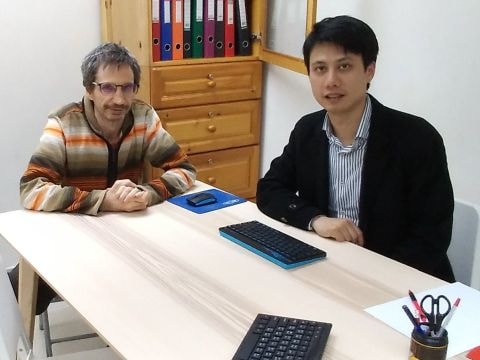
The components of presentations
You can easily assemble a presentation or a public speech out of their components: frameworks, content, style, medium, audience, goals and context or environment. Frameworks are sets of perspectives, view points that are connected through a logic or theme. They provide the structure of your presentation. You can nest frameworks into each other to create complex presentation structures.
Content is what you talk about and you need to master your content without paper to be able to connect to your audience. You need to have very clear goals: why you make the presentation and what you want to accomplish. You also need to know your audience and tailor make you public speech, office or classroom presentation to their levels and needs.
You also need to know the location and technical background of your planned talking like the room size, what microphone to use, amplifier, echo, air-conditioning. You can also choose the presentation style that fits to the audience, the time frame and the location.
Being a great public speaker means that you develop more and more variants of each element as tools in your toolbox, master them and learn how to assemble them together to make a specific presentation that fits to the audience, location, time frame and to your purposes.
These presentation and public speaking tips and skills can be used in other media, too, like wringing a book or a blog, making videos or podcasts. Once you learn presentation skills, strategies and techniques, you can multiply your audience size through different media. Your developed presentation skills can be useful in any forms of presentation like writing resumes, job interview etc.

Preparation and deliberate practice
In the lessons you can choose or get a topic to make a few-minute presentation about it. You can prepare at home or in the classroom or just start talking immediately. You will get feedback about your performance and then learn more about how to do it better and why, and then practise it again.
Research shows that deliberate practice is one of the most effective way to improve performance. It means that you focus on one skill or one technique at a time and practise that one thing until you have improved enough and then you move to another area.
For example, if your eye contact is not good, then you practise presentation and focus only improving eye contact. After enough practice, you can move on optimising your speaking speed, etc.
In the class you will learn, for example, how to create the structure and content of your speech, practise each of its element, test various styles, adjust your energy level and movements, speaking speed, optimise your body language, voice, eye contact that fit to your target audience and the situation.

Presentation skills to improve
Here are some mindsets, skills or techniques that you may want to learn and improve:
- learning about how to understand your audience's needs, knowledge and expectation to prepare your message that fits to them and the situation,
- clearly understanding the requirements and expectations of the people [your boss, teacher, organiser] who asked you to make the presentation, especially if they judging your performance,
- creativity: the process idea generation, evaluation and refinement for your topic,
- planning the presentation, information gathering, creating the structure of your talk, writing the details of your message,
- managing your emotions and stage fever during your performance: confidence, nervousness, being at ease and in the moment,
- learning to calibrate and influence your audience's emotions before, during and after the presentation, e.g. cheering them up,
- awareness of your body: recognising and eliminating bad body movements, gestures, nervous fidgeting (making small movements with your body, especially your hands and feet),
- mastering metaphors, analogies, jokes, story telling,
- using your voice, facial expression, body language
- managing your energy, enthusiasm, dynamics,
- using audio-visual aids,
- learning how to deal with unexpected things or evens and incorporating them into your presentation, for instance, what to do if a mobile phone rings during your talk.

Communication theories and models
Practising is necessary but not enough. If you understand the theories, see the big pictures, you can learn much faster and effectively. We can learn about:
- Communications theory,
- Understanding influence and persuasion,
- Presentation strategies,
- Marketing thinking [how to sell your core ideas],
- understanding the whole creation process.
Influencing people
Here are some scenarios when your improved public speaking and presentation skills can be useful:
- making a longer, formal or informal speech at ceremonies e.g. company banquette, funeral, opening ceremony of a business or public facility
- speaking in some sections of a job, promotional or school interview, for example introducing yourself, making an impromptu speech
- making a sales or other business presentation,
- making a press conference
- great public speaking skills are essential element of various professions. Tour guides, politicians, lawyers, teachers, actors, comedians, magicians, MC-s(master of ceremonies) do one way speaking all the time.
- creating your own audio or video blog,
- making a motivational speech at home, to your friend or in your business
- telling bedtime stories to your kid,
- telling jokes and stories
- making wedding speeches e.g. best man speech or wedding vows made by the marrying partners
- making apologies privately or publicly after you are caught of cheating your partner
- speaking to god if you are a believer
- speaking to yourself, to your pets or imaginary creatures
- giving audio or video testimonials
- confessing love or making breakup speeches
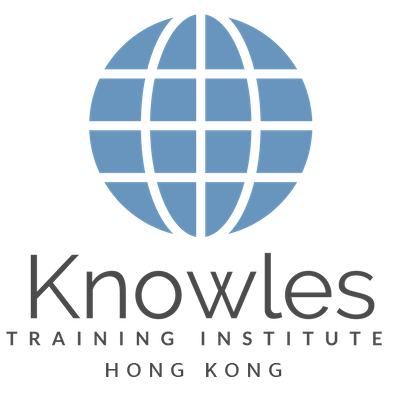
Presentation Skills Training Course Hong Kong
Presentation skills training course in hong kong.
Our corporate training course is also available in Kowloon, Sha Tin, Tsuen Wan, Tuen Mun, Yuen Long Kau Hui, Tseung Kwan O, Ta i Po, Sai Kung, Yau Ma Tei, Mong Kok, Kwun Tong, Tung Chung, Fanling – Sheung Shui, Sheung Wan, Causeway Bay, Wan Chai, Tin Shui Wai, Ta i Kok Tsui, Ma On Shan, Cheung Sha Wan, Hung Hom, Admiralty, Central, Tsim Sha Tsui, Tsing Yi, North Point, Lam Tin, Aberdeen, Wong Ta i Sin, Sham Shui Po, Lan ta u Island, Repulse Bay.
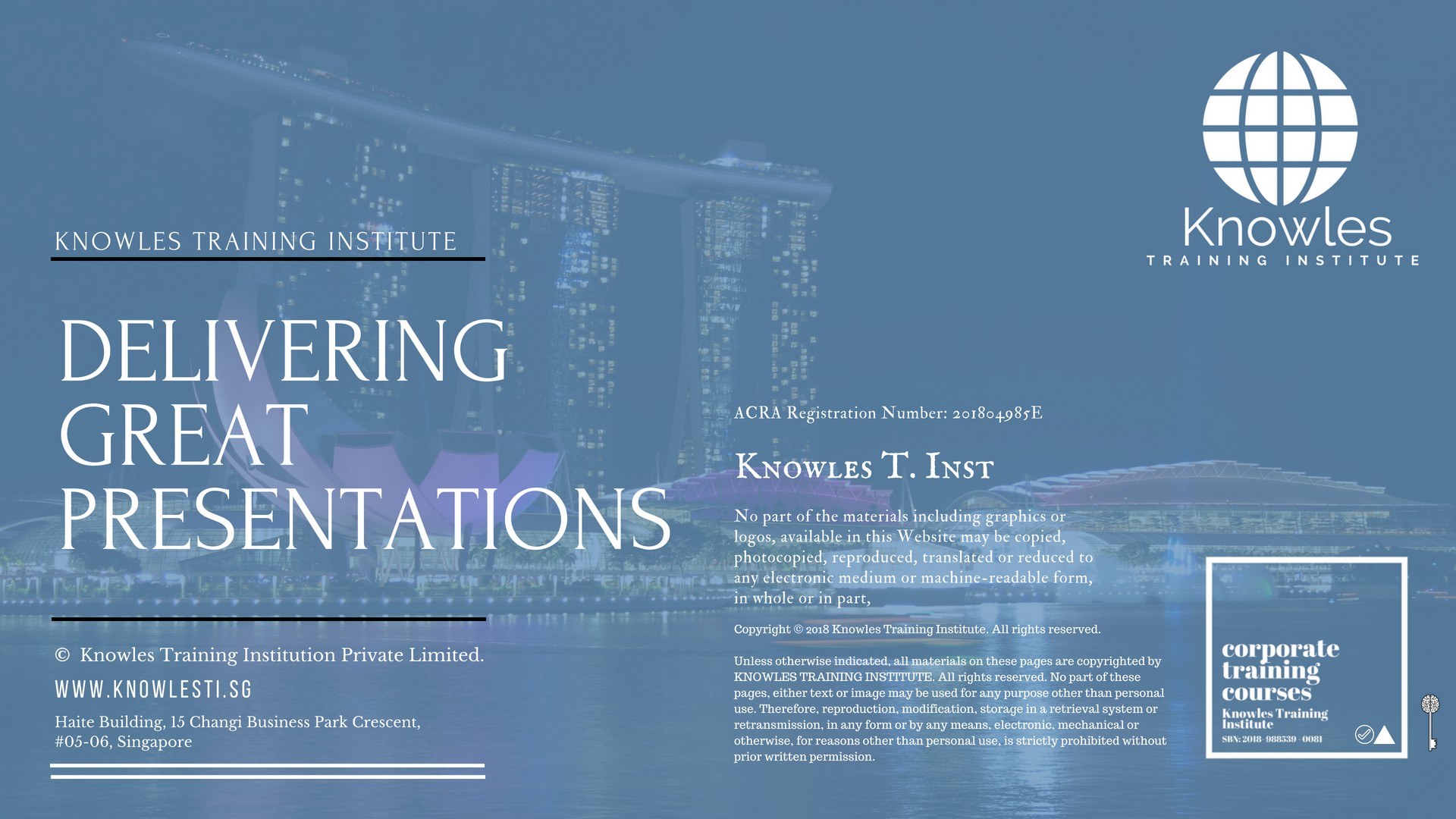
To deliver an excellent presentation, you don’t have to raise your voice or perform tricks to keep your audience engaged. Many studies have found that public speaking is the number one fear amongst most people, outranking flying, snakes, insects, and even death. It is also one of the skills that can make or break a person’s career.
In this presentation skills course, training participants will effective presentation skills that will make them highly competent.
i.fb-icon-element.fontawesome-icon.fb-icon-element-2{ color: #6796bf; background-color: #ffffff; border-color: #ffffff;}i.fb-icon-element.fontawesome-icon.fb-icon-element-2:hover { color: #6796bf; background-color: #ffffff; border-color: #ffffff;} Who Should Attend This Presentation Skills Course in Hong Kong
This presentations skills training training course in hong kong workshop is ideal for anyone who would like to gain a strong grasp and improve their delivering great presentations..
All Staff Within An Organisation
Team Leaders
Secretaries
The ideal group size for this Delivering Great Presentations course in Hong Kong is:
Minimum: 5 Participants
Maximum: 15 Participants
The duration of this Presentations training course in Hong Kong workshop is 2 full days. Knowles Training Institute Hong Kong will also be able to contextualised this workshop according to different durations; 3 full days, 1 day, half day, 90 minutes and 60 minutes.
2 Full Days
9 a.m to 5 p.m
Below Is The List Of Course Objectives Of Our Delivering Great Presentations Course in Hong Kong
Presentation Skills Course in Hong Kong Training – Part 1
- Perform A Needs Analysis And Prepare An Outline For Your Presentation.
- Select Presentation Delivery Methods.
Presentation Skills Course in Hong Kong Training – Part 2
- Practice Verbal And Non-Verbal Communication Skills.
- Elimiate Nervousness Before and During Presentations.
Presentation Skills Course in Hong Kong Training – Part 3
- Develop And Use Flip Charts With Colour.
- Create Targeted Powerpoint Presentations.
Presentation Skills Course in Hong Kong Training – Part 4
- Utilise White Board For Reinforcement.
- Explain How Video And Audio Enhance A Presentation.
- Enrich The Learning Experience With Humour, Questions, And Discussion During Your Presentation.
Below Is The List Of Course Content Of Our Delivering Great Presentations Course in Hong Kong
Presentation Skills Course in Hong Kong – Part 1: Creating The Program For Your Presentation In the first part of this presentation skills course, we will look at the steps to follow when designing a plan to enhance your presentation skills. The first thing you need to do is to conduct a needs analysis. This will assist you to understand better the audience you are presenting to and provide you with the solutions to a few common basic questions. A basic framework and some minor study would then be utilized to help create a basic program that will help you in developing your presentation skills.
- A needs analysis measures what kind of different skills employees have and what skills they would need. It can show you how to deliver the training at the appropriate time.
- To develop the outline for your presentation, consolidate the tasks that fit together and create headings that reflect the goal of the subtasks.
- Researching, Writing, and Editing Your Presentation
Presentation Skills Course in Hong Kong – Part 2: Choosing Your Presentation Delivery Methods In this section of the presentation course, you will determine what methods you will use to deliver your presentation. We will be beginning by covering basic presentation delivery techniques. Once we have a strong foundation and grasp on the basic techniques, we will then dive into more advanced presentation methods.
- Basic Presentation Delivery Methods
- After you feel satisfied with basic delivery techniques, you can then begin to explore some challenging ways to present and facilitate learning experiences.
- A training presentation can be a combination of different delivery methods as long as the net result is to achieve learning outcomes.
Presentation Skills Course in Hong Kong – Part 3: Verbal Communication Skills During Presentations Communication skills are required in order to deliver a great presentation. Without being able to verbalize your ideas and opinions, there is very little chance of having a successful presentation. This part of the presentation course will begin with looking, listening, and hearing skills, asking the proper and helpful questions, and finish off communicating with increased power.
- Hearing is an act of perceiving sound by the ear. Assuming an individual is not hearing-impaired, hearing is something that naturally happens. Listening, however, is something that one has to choose to do. Listening requires attention so that the brain can process information from words and sentences. Listening leads to learning.
- Types of questions are helpful in a presentation; open-ended questions, clarifying questions, and closed questions.
- It’s been said that you have exactly thirty seconds and two minutes to capture your everyone’s’ attention. It is crucial to be able to engage people from the beginning
Presentation Skills Course in Hong Kong – Part 4: Non-Verbal Communication Skills During Presentations
- Non-verbal communication is a method of communication by sending and receiving messages that contain no words. It is the most important form of communication. Nonverbal communication cues you into what is on another person’s mind, even more than voice or words can do.
- Gestures are an essential tool for any presenter. The challenge is to make gestures to support the speaking, reinforcing ideas.
- Signals are movements used to communicate your needs, desires, and feelings to other people. They are a form of expressive communication. More than 75% of the signs and signals you send to others are non-verbal.
- It’s Not What You Say; It’s How You Say It
Presentation Skills Course in Hong Kong – Part 5: Overcoming Nervousness Before and During Presentation Nervousness is perfectly normal when delivering a presentation. Public speaking is one of the top fear in the top ten lists of fears. Nervousness can strike at any point in a presentation. In the beginning, if you feel the audience has slipped away from you and if your memory betrays you. This part of the presentation course will provide you with methods to overcome presentation jitters.
- Visualization is the formation of visual images – mentally. It is a great way to prepare your mind before delivering a presentation.
- When nervous, people tend to breathe many short, shallow breaths in their upper chest.
- Appearing Confident in Front of the Crowd
Presentation Skills Course in Hong Kong – Part 6: Creating Fantastic Flip Charts For Your Presentation
- You might need a flip chart easel, pads of flip chart paper, a few sets of colored markers, and masking tape to showcase the results of exercises.
- There are many great reasons to pre-write your flip chart content
- Good use of different bright colors can make a difference in the dynamics of a presentation — and how participants view the content. Also, the effect of a great chart can suffer from the lack of color.
- Paper isn’t permanent. If you’re traveling with your materials or shipping them, such packages can get lost and/or damaged. You will need a plan B in case something happens
Presentation Skills Course in Hong Kong – Part 7: Creating Compelling PowerPoint Presentations Microsoft PowerPoint is a great tool to use when creating slides (visually) for a presentation. Visuals that are created in PowerPoint and shown on a screen is easier to see in a larger room than information displayed on a flip chart.
- List of Required Tools
- Beautiful Powerpoint Presentation: Tips and Tricks
- Though technology enables you to make great improvements to a presentation, it also offers many more opportunities for technical difficulties. Here are suggestions to keep your presentation moving along, even if the technology isn’t.
Presentation Skills Course in Hong Kong – Part 8: Wow ‘Em with the Whiteboard A whiteboard is a name for any gloss-surfaced writing board where non-permanent writings can be done. Unlike its predecessor, the chalkboard, there is no chalk dust, and markings remain longer than they would on a chalkboard. Whiteboards have been around since the 1970s, and are now improved and significantly more affordable compared to early models. The use of a whiteboard helps to improve interactivity during a presentation.
- Traditional and Electronic Whiteboards
- Colors on a whiteboard are often more vivid than those on a flip chart.
- Creating a Plan B
Presentation Skills Course in Hong Kong – Part 9: Vibrant Videos and Amazing Audio Audio and video are a part of our everyday lives, so they are accepted –and even media in a presentation. They are appealing options for a presentation because they provide learners with more dimensions by which to receive information. While video and audio both represent a one-way communication to participants, the opportunity to use them as part of learning exercises or in the ensuing discussions adds value to the presentation
- For video with audio, you will need some type of player, depending upon the media type
- Tips and Tricks For Audio & Video
- Regardless of the method you use for your audio and video, it is essential to have a plan B set in place in the event that something goes awry with the technology.
Presentation Skills Course in Hong Kong – Part 10: Pumping Up Your Presentation Up a Notch Bringing it to the next level is something you can accomplish after feeling comfortable with all of the previous topics discussed. You can add the little touches that will produce a lot of value during your presentation.
- Humor is one the most popular way to hype a presentation. It makes the audience get align with you, and it also sends a signal that you are in charge. If delivered well, humor enriches a presentation.
- Proper questions can also be used in many ways, and at just about any time during your presentation.
- Most of the discussion during your presentation should be structured to fit with the learning exercises. If a comment or question is made during a discussion that is not of the topic or something that will not be appropriate to deal with at that time, you can always add it to the parking lot, and come back to it during the wrap-up to bring closure.
- If time permits in your presentation, you should wish to hold a general question-and-answer session.
Each participant will receive the following materials for the Delivering Great Presentations course
Presentations skills course in hong kong learner’s guide.
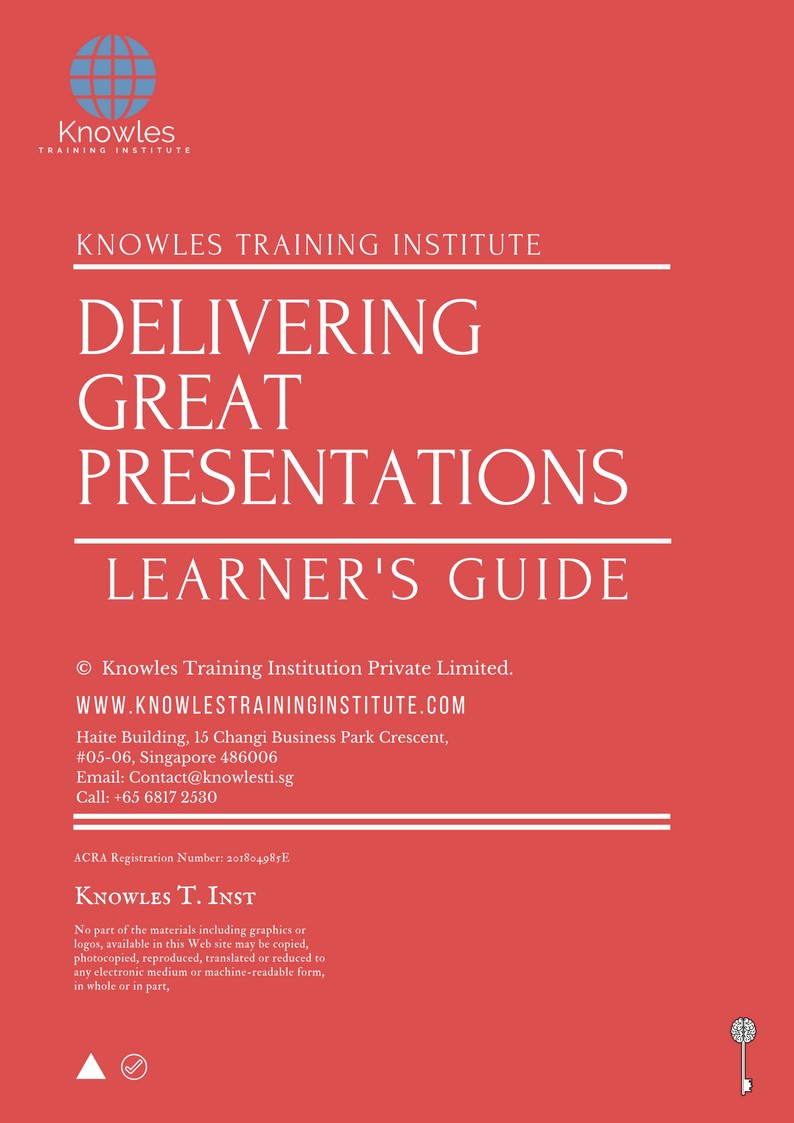
Presentations Skills Course in Hong Kong Handouts
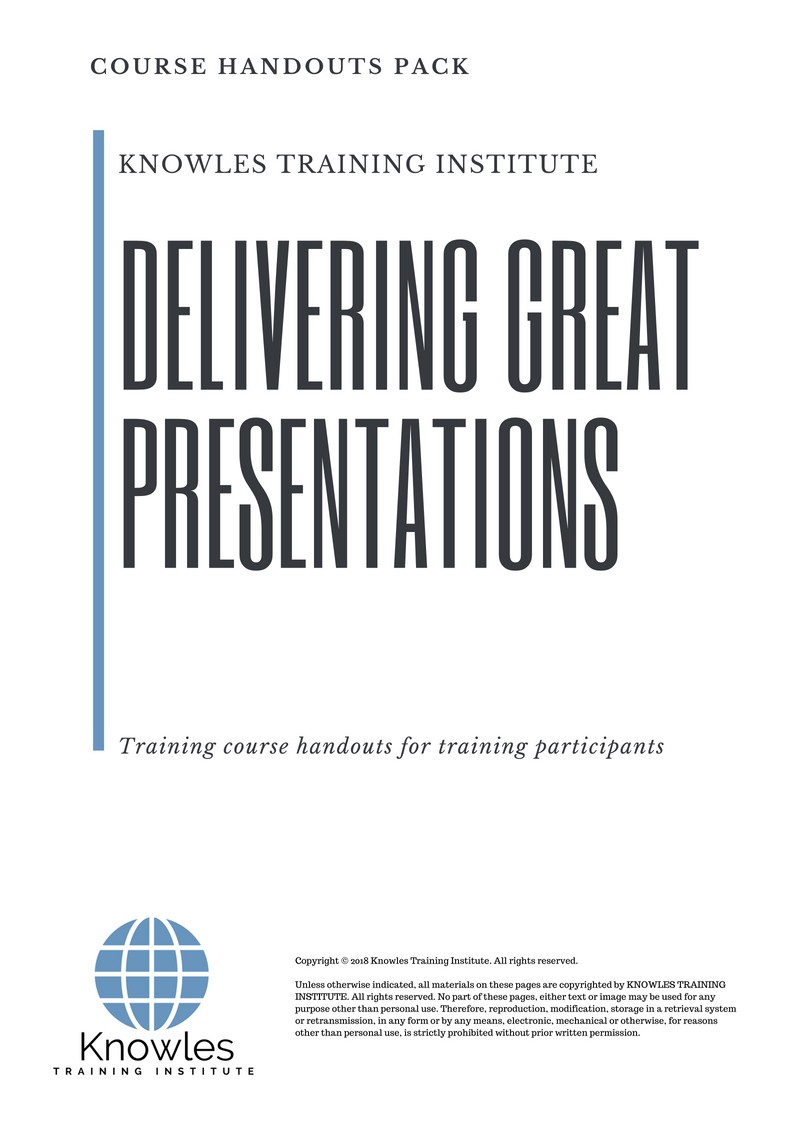
Presentations Skills Course in Hong Kong PPT Slides Used During Course
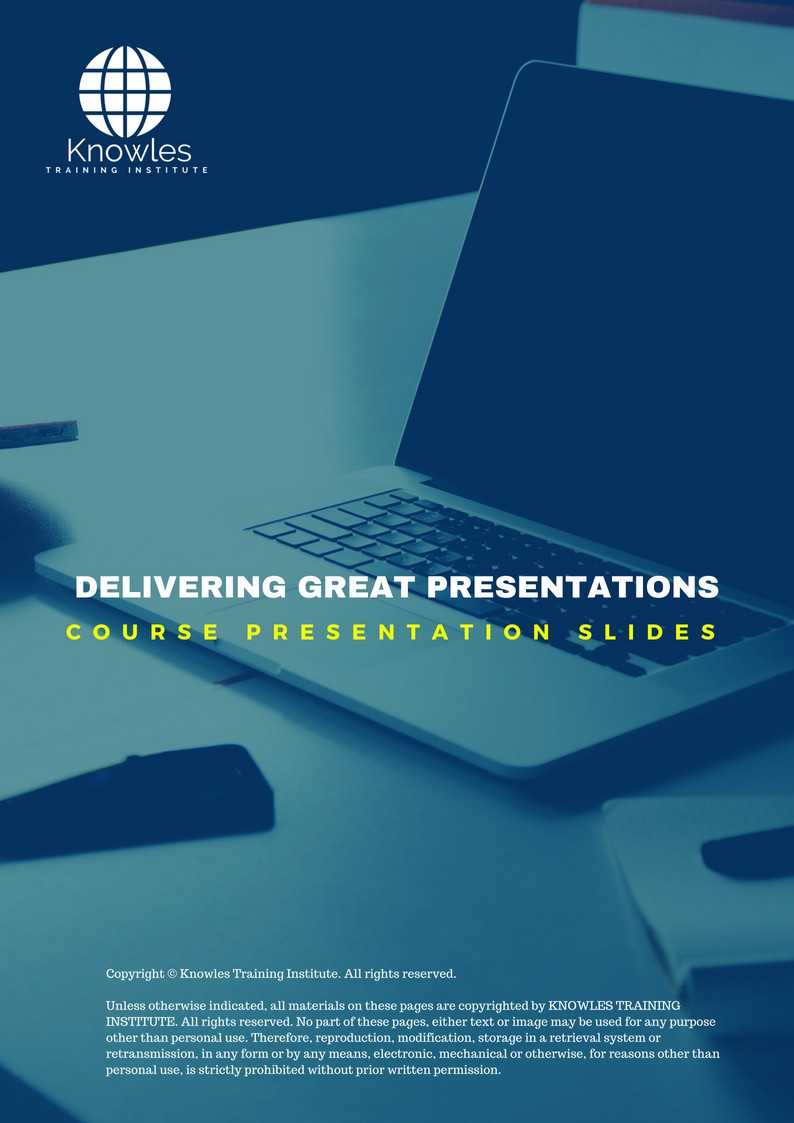
Each course participant will receive a certification of training completion
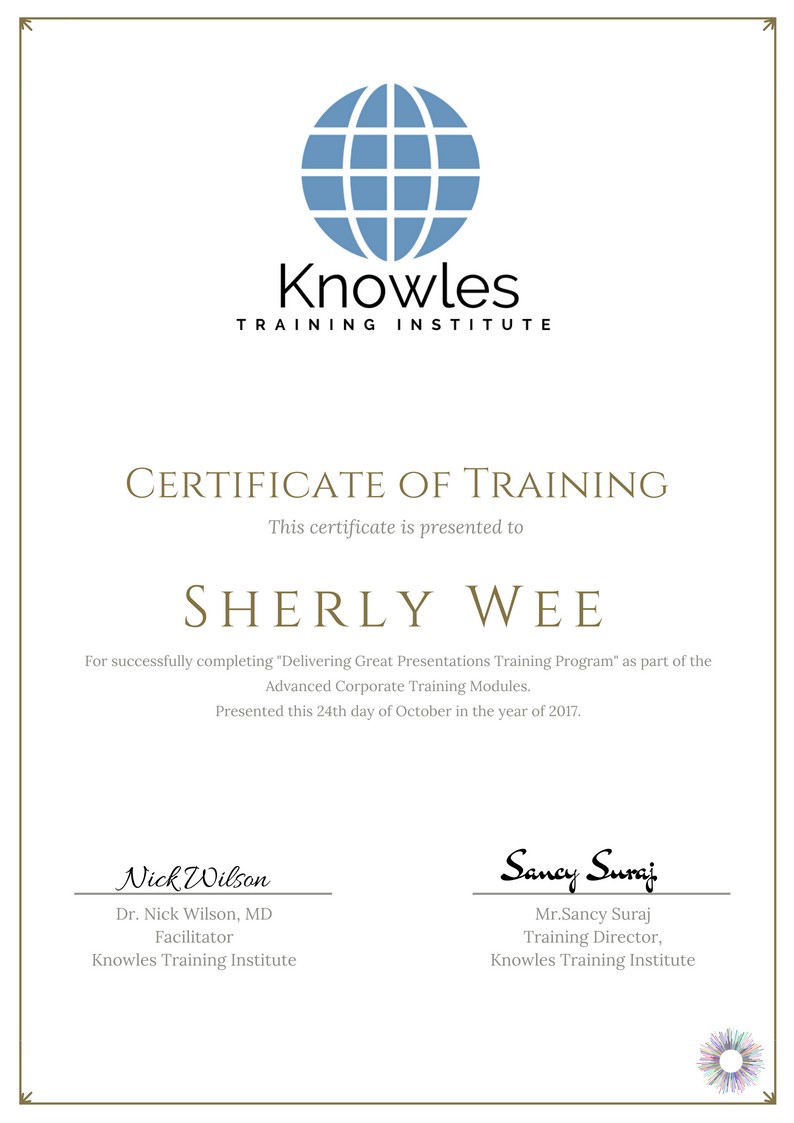
There are 4 pricing options available for this Delivering Great Presentations training course in Hong Kong. Course participants not in Hong Kong may choose to sign up for our online Delivering Great Presentations training course in Hong Kong.
- USD 1,019.96 For a 60-minute Lunch Talk Session.
- USD 434.96 For a Half Day Course Per Participant.
- USD 659.96 For a 1 Day Course Per Participant.
- USD 884.96 For a 2 Day Course Per Participant.
Discounts available for more than 2 participants.
Contact us for the latest Delivering Great Presentations course in Hong Kong schedules:
Email: [email protected]
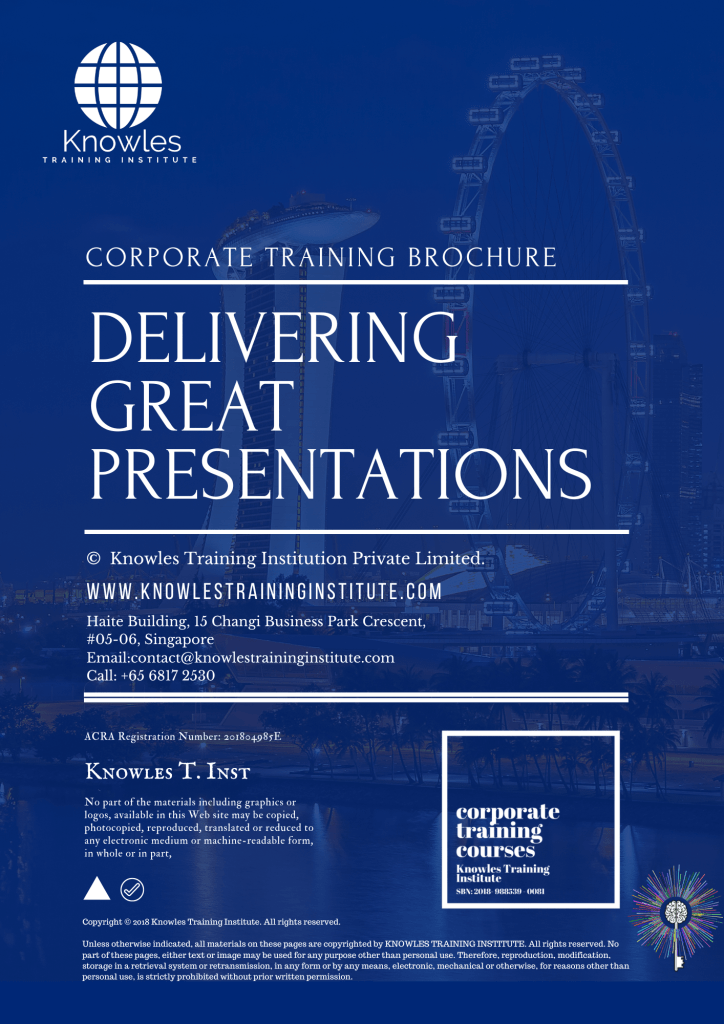
Request for this Delivering Great Presentations skills course in Hong Kong brochure. Fill up the short information below and we will send it to you right away!
Post Training Support: A vast majority of training does not have any effect beyond 120 days. To work, training has to have a strong pre- and post-training component. Post-training reinforcement helps individuals to recall the understanding and ask questions.
Blended Learning: Learning does not occur in the classroom. Virtually everybody prefers distinct ways of learning. Successful learning should have a multi-channel, multi-modal strategy.
- We Understand The Industry: We’ve got a profound comprehension of the business, business design, challenges, strategy and the that our participants are in and have designed the courseware to cater to their professional needs.
- Course Content: Knowles Training Institute’s material is relevant, of high quality and provide specific learning results. Participants will leave the training course feeling as they have gained a strong understanding and will also be in a position to execute what they have learned sensibly.
Course Development — The workshop modules follow a systematic and logical arrangement. This structure helps to ensure that the course material allows the facilitators to deliver the course in a logical arrangement. Consider the subjects as building bricks into learning, our facilitators slowly build towards a comprehensive picture of this entire topic.
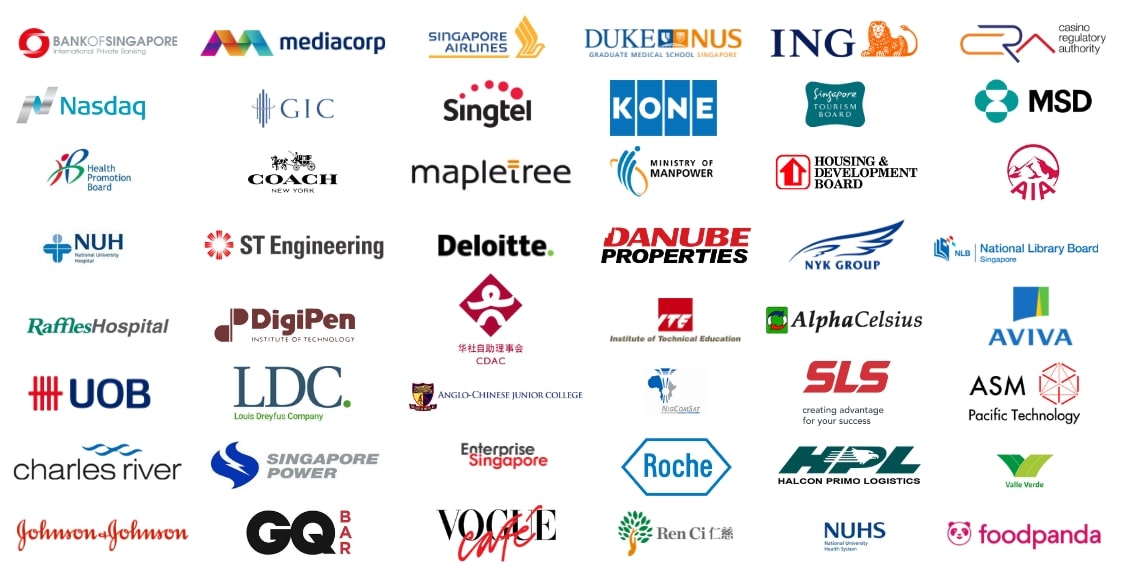
Fill up the form and we will get back to you in less than 1 working day.
Alternatively, give us a call to have one of our training consultants contact you. Our corporate training courses can be contextualized to meet your organization’s training needs. Leverage on our large pool of professional trainers and consultants for your organization’s training needs.
Presentation Skills FAQ
What are good presentation skills, how can i improve presentation skills, what are the main types of presentations, how do you evaluate presentation skills, what is a good presentation, what is a presentation format, what is a presentation style, what are 3 important segments of a presentation, what is the method of presentation, how do you introduce yourself in a presentation, how do you present a presentation, which is the 6 by 6 rule for presentations, how do you present a presentation creatively, what is the main purpose of presentation, what are the different types of presentation styles, what are oral presentation skills, what are the features of oral presentation, what are the features of powerpoint, what is presentation and its features, presentation skills training course in hong kong, kowloon, tsuen wan, yuen long kau hui, tung chung, sha tin, tuen mun, tai po, sai kung, yung shue wan. presentation skills training course workshop, training, class, seminar, talk, program, programmed, activity, lecture. presentation skills training course, workshops, classes, seminars, talks, programs, programmed, activities, lectures in hong kong. life coaching skills training improvement tips, life coaching skills training techniques, improve life coaching skills training, improve life coaching skills training games, life coaching skills training improvement exercises, improve life coaching skills training power, how to have good life coaching skills training, how to have good life coaching skills training in studying, how to build up your life coaching skills training, how to improve life coaching skills training how to improve presentation skills training course in hong kong. enhance, boost, build up, enlarge, heighten presentation skills training course in hong kong. increase, intensify, raise, reinforce, strengthen life coaching skills training. upgrade, amplify, boom, elevate, exaggerate, magnify, grow, gain life coaching skills training. develop life coaching skills training, multiple, power up, beef up, bolster, establish, extend life coaching skills training. invigorate, restore, step up, toughen, empower, fortify, regenerate life coaching skills training. rejuvenate, renew, escalate, expand, maximize life coaching skills training. powerful, mighty, impressive, competent, great, excellent, exceptional life coaching skills training in hong kong. superb life coaching skills training. super, superior, strong, solid, active presentation skills training course and workshops in hong kong. life coaching skills training enhancement, booster, building up, enlargement, heightening, increment, strengthening, amplification. life coaching skills training magnification, growth, development, power, empowerment, regeneration. life coaching skills training rejuvenation, development, escalation, expansion. life coaching skills training maximization, power training courses & workshops in hong kong., corporate training courses in hong kong.

Terms and Conditions: 1. Valid for 30 Days Only, 2. 1 Person Only, 3. Selected Courses Only, 4. General Terms and Conditions Applied*

Training I Production I Events
The training, design & storytelling agency, welcome to punch presentations .
Fusing the incredible power of theatre arts with the world of business, we create solutions for your communication needs. From bespoke and ready-made training programmes, facilitated by a diverse range of professionals to suit specific needs to a full suite of production and physical & virtual event services.
All to support and deliver your message.

Rehearsing a presentation during The Actor’s Approach to Executive Presence programme
Actors preparing during the production of an internal training video for a client
A client delivering a keynote presentation on stage in Sydney
A global start-up distrupting the loyalty industry

Setting Goals and Outcomes
A senior executive of a global start-up hired Punch to help them up-skill their presentation skills, focusing specifically on motivational and inspirational leadership.
Practical coaching using the ‘do – learn – do - learn’ approach

Lights, camera, action
Practical Coaching
After completing a bespoke version of "The Actors Approach to Presentation Skills", our client was promoted to CEO and continued to work with Punch to produce a series of internal videos to guide the company through its rapid expansion.
Lights, Camera, Action
When the company was ready to launch publicly, Punch was there to design, produce, and manage the event that was streamed live across four continents.
Executive & coach sitting at table
Click to be inspired...


How to improve your presentation skills
Like public speaking , the prospect of presenting to a group can make people nervous. It can however, like public speaking, help you progress your career and give you a reputation for being a reliable, engaging presenter.
Whether you’re in a role that is called on to present often or on an ad hoc basis, it pays to improve and develop your presentation skills so when the time comes, you’re prepared and confident. Here are our top presentation tips.
The purpose of presenting
While the content of presentations will vary depending on your role, industry, level of seniority and the organisational strategies and goals you work to, presentations tend to be delivered with one of these purposes in mind:
Example: A CFO presenting the end of financial year results to the business, or IT announcing an organisation-wide software review.
Example: The Administration team presenting a new project management tool to be adopted by the department, or Marketing presenting the new brand guidelines to the organisation.
Example: A Sales Manager presenting products and services to potential clients, or an Accountant vying to get their new reconciliation process across the line with the executive team.
Example: The CEO presenting a new strategic vision to the organisation with ambitious new financial goals, or an executive presenting a partnership with a not-for-profit.
Improving your presentation skills
Your presentation skills will improve every time you do it, and your confidence will grow too. To fast track your development, employ these presentation tips while you research, prepare, practice and deliver your next presentation.
- Research It’s an obvious point, but a tremendously important one. Research means knowing the content or information you’re delivering, but also knowing your audience, anticipating their concerns and questions, and understanding the environment or space you’re presenting in. Being able to tailor your presentation to these elements will strengthen it and reduce the presence of unknowns – a common source of presentation nerves.
- Practice, practice, practice If you’ve got a presentation coming up, whether it’s to your team, a small selection of executives or the whole organisation, you’ll always feel better if you’re well practised. Ask friends, family or colleagues to listen to your presentation in the days before, inviting their questions and feedback. In the absence of an audience, use a mirror. Focus on delivering your words at a manageable pace, breathing deeply to keep yourself calm and regular eye contact with your audience.
- Arrive early Get to the location of your presentation before everyone else does, and allow yourself time to set up the equipment you need, read through your notes and take some calming deep breaths. If you’re rushing between meetings and aren’t able to arrive early, take a few quick minutes to relax and set yourself in the moment. Physical and mental readiness are just as important as the content you’ve prepared when it comes to possessing brilliant presentation skills.
- Watch TED talks There are literally thousands of TED Talks and presentations that have been conducted all around the world at myriad different venues. Review those that are popular, as well as some that are closer to your field of work, or the content you might be presenting. Take note of what is most engaging about the best talks, and include these qualities in your own presentation.
- Weave in stories Including stories and anecdotes in your presentation will ensure it’s unique, engaging and relevant. Whether you draw on your own experiences, use a colleague’s story or draw on something published and well-known, stories can help personalise the factual content and make it truly memorable. The inclusion of stories and anecdotes is a presentation tip that shouldn’t be overlooked.
- Don’t leave it to PowerPoint If you're bringing slides, less is more. Keep the graphs and charts simple, using them to summarise points rather than explain them in detail. Pictures can be a powerful way to reinforce your key messages, but make sure they don't distract from your key messages.
- Be gracious Being brash or arrogant probably won’t gel well with your audience, nor will it help you get your information across. Be polite, considerate and patient with your audience, no matter what their size or seniority, and always thank them for their time and attention at the conclusion of your presentation.
Most employees will be called on to present at some point in their career, whether it’s explaining a report in a weekly team meeting, or proposing a new business model to board members. Use these presentation tips to ensure that you’re confident and ready, and that you use every presentation as an opportunity to enhance your skills.
- Wellbeing Keynote Speaker
- High-Performance Habits
- Communication Keynote Speaker
- Storytelling Training for Leaders: How to Lead with A Story
- For Event Planners

Powerful Presentations Skills Training in Hong Kong
This program will help teams deliver more powerful business presentations, communicate with clarity, and harness the power of storytelling .

Level Up Your Team’s Ability to Deliver Powerful and Persuasive Presentations
Based out of Hong Kong, Akash Karia is a renowned executive public speaking and presentation skills trainer and coach.
Clients who have sought him out for presentation skills and public speaking workshops and coaching include Sony Pictures Entertainment (Hong Kong), Ernst & Young (Hong Kong), JP Morgan (Hong Kong), Gucci (Italy), Bristol Myers Squibb (USA), and many more.
Akash is also the author of 12 bestselling books on the topics of public speaking, storytelling, and influence. A former executive at a multi-million dollar tech firm in Tanzania, Akash moved to Hong Kong in 2012 and has since been coaching and leading workshops on presentation skills and public speaking for corporates across the Asia-Pacific region.
This program will help teams deliver more powerful business presentations, communicate with clarity, and harness the power of storytelling.

In this program, leaders will discover:
- How to harness the magic of storytelling
- The 5-step structure to quickly craft stories that sell
- Storyboard techniques and how to structure a powerful presentation
- How to communicate with greater clarity
The program can be customized for a wide range of audiences (leaders, marketers, salespeople, etc.), and can further be niched down into one of two separate tracks:
Track 1: The Science of Storytelling in which audiences discover how to create stories that sell. Audiences will walk away with a deeper understanding of why stories matter, how to use and craft sticky stories, and how to incorporate them at work.
Track 2: Powerful and Persuasive Presentations – for teams who want to dramatically uplevel their presentation skills. This program is best done as a workshop or masterclass (10 – 80 people).
Please contact us to explore which of these two tracks is best for you.
Loved it! Insightful and truly useful
Hinna ijaz sony pictures entertainment.
Creativity demands an environment of autonomy, experimentation, and safety. When teams feel empowered and safe, they are more willing to speak up, take ownership, and iterate quickly.
Akash karia, select clients, let’s energize your team & supercharge your business .
Please fill out the information below to get in touch with Akash and his team.
- Keynote Speaking
- Leading For Innovation
- Winning Through Wellbeing
- The Big Idea
- Books By Akash
- Free Resources
©2024 Akash Karia. All Rights Reserved
Site by: digitalONDA | Privacy | Contact Akash

- Event Calendar
- Media Coverage
- Student Mobile App
- Free Courseware
- "Knowledge for All" TV Programme
- Adverse Weather Arrangement
- High Contrast
- Prospective Students
- Current Students
Presentation Skills
| ENGL A122 |
|















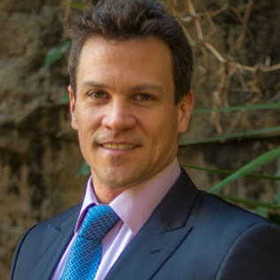






























IMAGES
COMMENTS
Included courses: Presentation Skills Training HKD7995. Time Management Training HKD7995. Leadership Skills Training HKD7995. Effective Communication Skills HKD7995. Stress Management Course HKD7995. Total without package: HKD39975. Package price: HKD23995 (Save HKD15980) Purchase now.
How to improve your presentation skills In this section, we share the steps you can take to further develop your presentation skills: 1. Watch other presentations You can find numerous videos of speeches and presentations online. Look for presentations from well-known public speakers, watch them and take note of how they present themselves.
Shine: Pioneers in Presentation Skills Training, Communication Skills, Leadership Development and AI Training in Hong Kong. Established in 2012, Shine Training Ltd. brings together hundreds of years of professional experience, research and understanding as to how to have an impact on their colleagues, employees and business partners.
The course focuses on techniques for managing speech anxiety, skills in organising and giving informal speeches and presentations, and practice in providing feedback on public speech deliveries. Course participants must be prepared to present and deliver informal speeches for different purposes in front of the class, observe and be observed ...
1. brainstorming and preparing the outline 2. 1: Content and Organisation 2. 2: Content, Organisation and Language Use. Presentation Skills Workshops will help you to improve English language presentation skills. In each workshop you will also practise making good presentations, receive instructive feedback and discover how to work on your ...
Delivering a brilliant, memorable and interactive presentation in Hong Kong requires a number of skills including effective planning, choosing the right delivery method(s), developing outstanding customised content, professional group facilitation, the efficient use of technology, effective communication skills and more.
You can easily assemble a presentation or a public speech out of their components: frameworks, content, style, medium, audience, goals and context or environment. Frameworks are sets of perspectives, view points that are connected through a logic or theme. They provide the structure of your presentation. You can nest frameworks into each other ...
ENGL A122 is a practical, skills-based course that focuses on the skills you need to give academic, vocational or professional presentations. By the end of the course's six units, you should be able to analyse a presentation's situation, plan and structure a presentation, research information for your presentation and analyse your roles as a ...
Phone: 5808 8521 Email: [email protected] PRESENTATION SKILLS TRAINING Generate a group quote today COURSE LENGTH: 2.0 DAYS Delivering a brilliant, memorable and interactive presentation in Hong Kong requires a number of skills
Presentation Skills Course in Hong Kong - Part 5: Overcoming Nervousness Before and During Presentation Nervousness is perfectly normal when delivering a presentation. Public speaking is one of the top fear in the top ten lists of fears. Nervousness can strike at any point in a presentation. In the beginning, if you feel the audience has ...
Delivering a PowerPoint Presentation that Sells - 3 Days. 21 Hours. In this instructor-led, live training in Hong Kong, participants will learn how to prepare and deliver a convincing PowerPoint presentation. From technical preparation to skillful delivery, each essential point is covered in this interactive workshop.
A senior executive of a global start-up hired Punch to help them up-skill their presentation skills, focusing specifically on motivational and inspirational leadership. Practical coaching using the 'do - learn - do - learn' approach ... Hong Kong Office. [email protected] +852 9669 8507 .
Story Flow Framework: Develop a tight and synchronised story with a clear objective in mind. Effective Delivery. Posture & Gesture: Project confidence in a presentation with our body language. Presence & Setting: Build a stronger connection and engagement with our audiences. "Melody" of our speech: Make our audio presentation more ...
This 1-day Public Speaking training course will prepare you for delivering live presentations by covering skills like how to overcome nervousness, how to boost your confidence, how to read your audience, using icebreakers, how to best interact with questions or interruptions and much more. The PD Training Public Speaking course also provides ...
Ask friends, family or colleagues to listen to your presentation in the days before, inviting their questions and feedback. In the absence of an audience, use a mirror. Focus on delivering your words at a manageable pace, breathing deeply to keep yourself calm and regular eye contact with your audience. Arrive early.
Based out of Hong Kong, Akash Karia is a renowned executive public speaking and presentation skills trainer and coach. Clients who have sought him out for presentation skills and public speaking workshops and coaching include Sony Pictures Entertainment (Hong Kong), Ernst & Young (Hong Kong), JP Morgan (Hong Kong), Gucci (Italy), Bristol Myers ...
ENGL A122 is a practical course that focuses on the skills students need to give academic, vocational or professional presentations. The course introduces students to different aspects of a presentation and enables students to deliver effective personal presentations. This is a foundation-level course, and it counts towards the '20-credit free ...
Malcolm Andrews - Presentation Skills Trainer in Hong Kong . ... In my experience presentation skill is a skill that is learned rather than inborn so anyone can improve their presentation skill in time. It is a very common misconception that a great presenter has be an extrovert but often this isn't the case. Steve Jobs, for example, is a ...
Presentation skills are the abilities and qualities necessary for creating and delivering a compelling presentation that effectively communicates information and ideas. They encompass what you say, how you structure it, and the materials you include to support what you say, such as slides, videos, or images. You'll make presentations at various ...
Publication Date: 2010-02-11. Presentation Skills for Students by Joan van Emden; Lucinda Becker. Call Number: PN4129.15 .V36 2016. ISBN: 9781137576491. Publication Date: 2016-06-23. Presentation Skills for Technical Professionals by Naomi Karten. ISBN: 9781849280730. Publication Date: 2010-09-01.
This is not surprising. Effective communications skills are a powerful career activator, and most of us are called upon to communicate in some type of formal presentation mode at some point along the way. For instance, you might be asked to brief management on market research results, walk your team through a new process, lay out the new budget ...
2. Watch other presentations. Developing the soft skills necessary for a good presentation can be challenging without seeing them in action. Watch as many as possible to become more familiar with public speaking skills and what makes a great presentation. You could attend events with keynote speakers or view past speeches on similar topics online.
skills by introducing some of these useful oral delivery techniques. In particular, attention will be drawn to common pronunciation errors often observed among Hong Kong speakers. Participants will be expected to engage in a range of activities. Remarks: • All participants are required to turn on their webcam to facilitate interaction should the
Understanding your audience is paramount for a presentation's success. Tailor your content to their interests, background, and level of expertise to ensure relevance and engagement.
Enhance presentation skills through feedback by: Seeking Specific Feedback: Ask for detailed input on clarity, engagement, and delivery. Active Listening: Pay attention to constructive criticism ...
To effectively assess your team's presentation skills, start by establishing clear, objective criteria. Consider aspects such as clarity of speech, engagement with the audience, use of visual aids ...
Public speaking and storytelling are essential for inspiring partners and garnering support for conservation and development goals. The Global Wildlife Program (GWP), funded by the GEF and led by the World Bank, organized two workshops aimed at improving public speaking and storytelling skills for GWP project teams. The workshops were led by instructors from Dale Carnegie, a renowned ...
Finally, understand that improving presentation skills is an ongoing process. Each time you present, seek out new feedback and go through the cycle of embracing criticism, reflecting, planning ...
Today's guest blog is from Microsoft Education Product Manager, Samantha Fisher . We are so excited to announce that Speaker Progress, our newest Learning Accelerator, is now rolled out worldwide!Speaker Progress helps students develop confidence in their presentation skills and reduces anxiety by providing AI-powered real-time coaching and feedback on their public speaking skills like their ...
Style guides like APA offer guidance on citing print sources in research essays, but don't have specific rules around presentation slide decks. An easy solution is to follow the same author-date citation system to create in-text citations in your slides that match up with a reference list at the end of your slide deck .